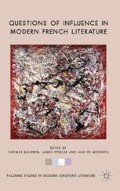Abstract
The history of the roman noir in France is, from its beginnings, one of influence. During the German Occupation of 1940–1944 American films and novels were banned. Nevertheless, American hard-boiled detective fiction became extremely popular after the Liberation, and it was not long before French writers began to imitate the genre. While the first works published by Gallimard’s crime fiction series — the Série noire, established in 1945 by Marcel Duhamel — were translations into French of works originally published in English by British authors,1 French authors soon began to write novels in the hard-boiled style. Early examples of the genre were imitations, even pastiches, of the American model: authors often adopted US pseudonyms and set their novels in America.2 Of this generation of writers, Léo Malet is considered a pioneer of an authentically French roman noir, ‘le père du roman noir français’ (‘the father of the French roman noir’).3 An avant-garde writer associated with the Parisian Surrealists in the 1920s and 1930s, Malet began his crime writing career during World War II under the pseudonym Frank Harding, which appeared on a series of novels featuring American investigative journalist Johnny Metal. However, the publication of his 1943 novel 120 rue de la Gare marked a new departure, with a setting much closer to home: Paris during the Occupation, and with a central character, private detective Nestor Burma, who was recognizably, not to say emphatically, French.
Access this chapter
Tax calculation will be finalised at checkout
Purchases are for personal use only
Preview
Unable to display preview. Download preview PDF.
Notes
See Claire Gorrara, ‘Cultural Intersections: The American Hard-Boiled Detective Novel and Early French roman noir’, Modern Language Review, 98.3 (2003), 590–601, for a discussion of the influence of the American hardboiled on the emergent Série noire.
Michelle Emanuel quotes the Gallimard website that, on the occasion of the author’s death, referred to him as ‘le père du roman noir français’. See Michelle Emanuel, From Surrealism to Less-Exquisite Cadavers: Léo Malet and the Evolution of the French Roman Noir (Amsterdam and New York: Rodopi, 2006), p. 25. All translations are my own.
Patrick Pécherot, Les Brouillards de la Butte (Paris: Gallimard, 2001), p. 9.
Léo Malet, Nestor Burma. Premières enquêtes, ed. by Nadia Dhoukar (Paris: Robert Laffont, 2006), p. 311.
Patrick Pécherot, Boulevard des Branques (Paris: Gallimard, 2005), p. 41.
Patrick Pécherot, Belleville-Barcelone (Paris: Gallimard, 2003), p. 164.
Léo Malet, Nestor Burma. Les Nouveaux Mystères de Paris (I), ed. by Nadia Dhoukar (Paris: Robert Laffont, 2006), p. 863.
David Fraser, ‘Polarcauste: Law, Justice and the Shoah in French Detective Fiction’, International Journal of Law in Context, 1.3 (2005), 237–60 (p. 250).
A more nuanced analysis of these incidents is offered by Claire Gorrara in ‘Forgotten Crimes? Representing Jewish Experience of the Second World War in French Crime Fiction’, South Central Review, 27.1–2 (2010), 3–20 (pp. 8–9).
Malet, Nestor Burma. Les Nouveaux Mystères de Paris (II), ed. by Nadia Dhoukar (Paris: Robert Laffont, 2006), p. 210.
Ibid., p. 293. The singling-out of Bohman’s agency would have been to enable implementation of a German ordinance of October 1940, ‘requiring all Jewish enterprises in the Occupied Zone to be placed under trusteeship as a preliminary to “Aryanization”‘; see Julian Jackson, France: The Dark Years, 1940–1944 (Oxford: Oxford University Press, 2001), p. 356.
This aspect of the novel is analysed in Angela Kimyongür, ‘Patrick Pécherot, Eugenics and the Occupation of France’, in Violence and War in Culture and the Media: Five Disciplinary Lenses, ed. by A. Karatzogianni (London & New York: Routledge, 2012), pp. 30–45.
Editor information
Editors and Affiliations
Copyright information
© 2013 Angela Kimyongür
About this chapter
Cite this chapter
Kimyongür, A. (2013). ‘Le Cycle de Nestor’: Patrick Pécherot’s Rewriting of Léo Malet. In: Baldwin, T., Fowler, J., de Medeiros, A. (eds) Questions of Influence in Modern French Literature. Palgrave Studies in Modern European Literature. Palgrave Macmillan, London. https://doi.org/10.1057/9781137309143_12
Download citation
DOI: https://doi.org/10.1057/9781137309143_12
Publisher Name: Palgrave Macmillan, London
Print ISBN: 978-1-349-45632-1
Online ISBN: 978-1-137-30914-3
eBook Packages: Palgrave Literature CollectionLiterature, Cultural and Media Studies (R0)

